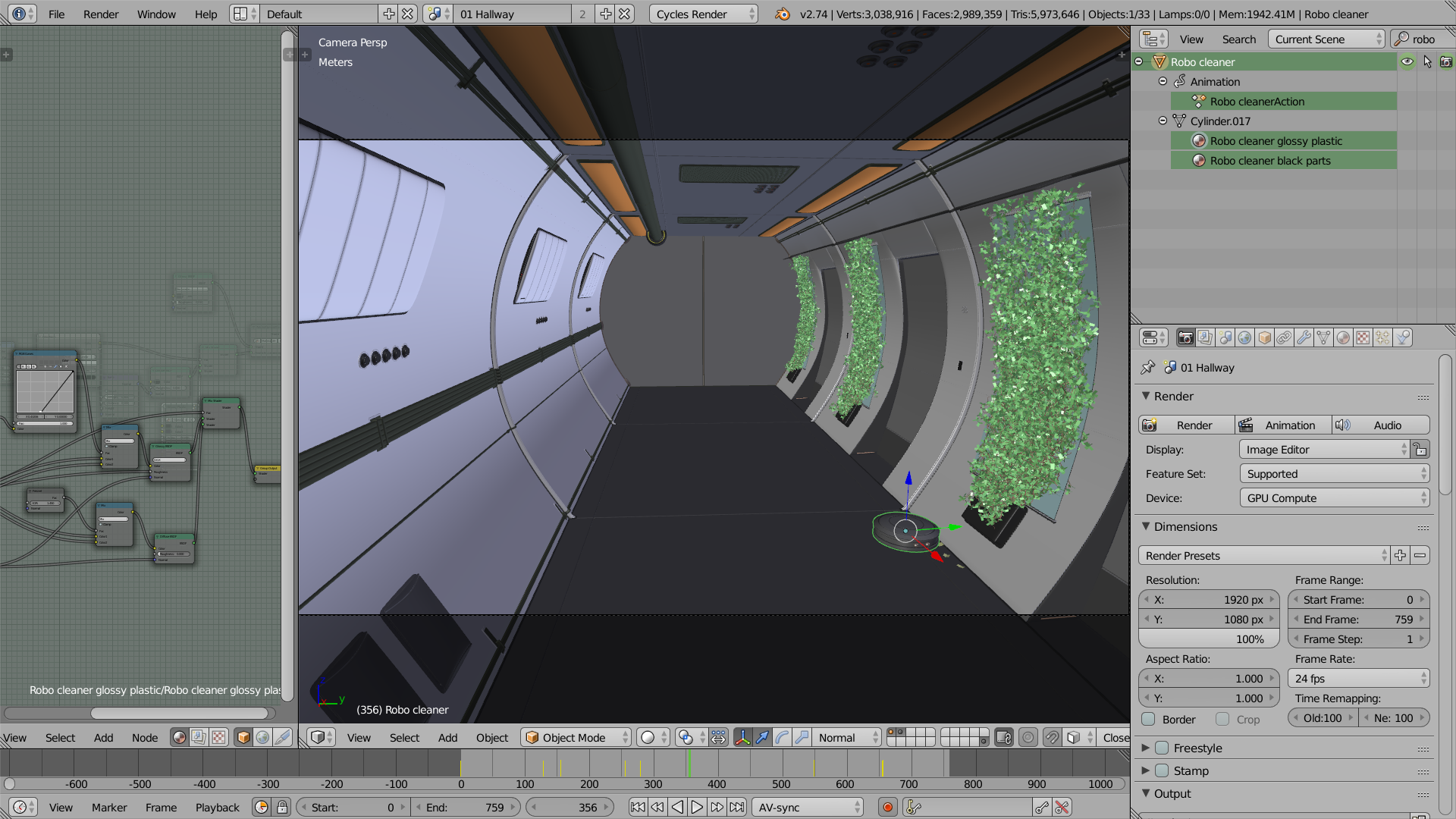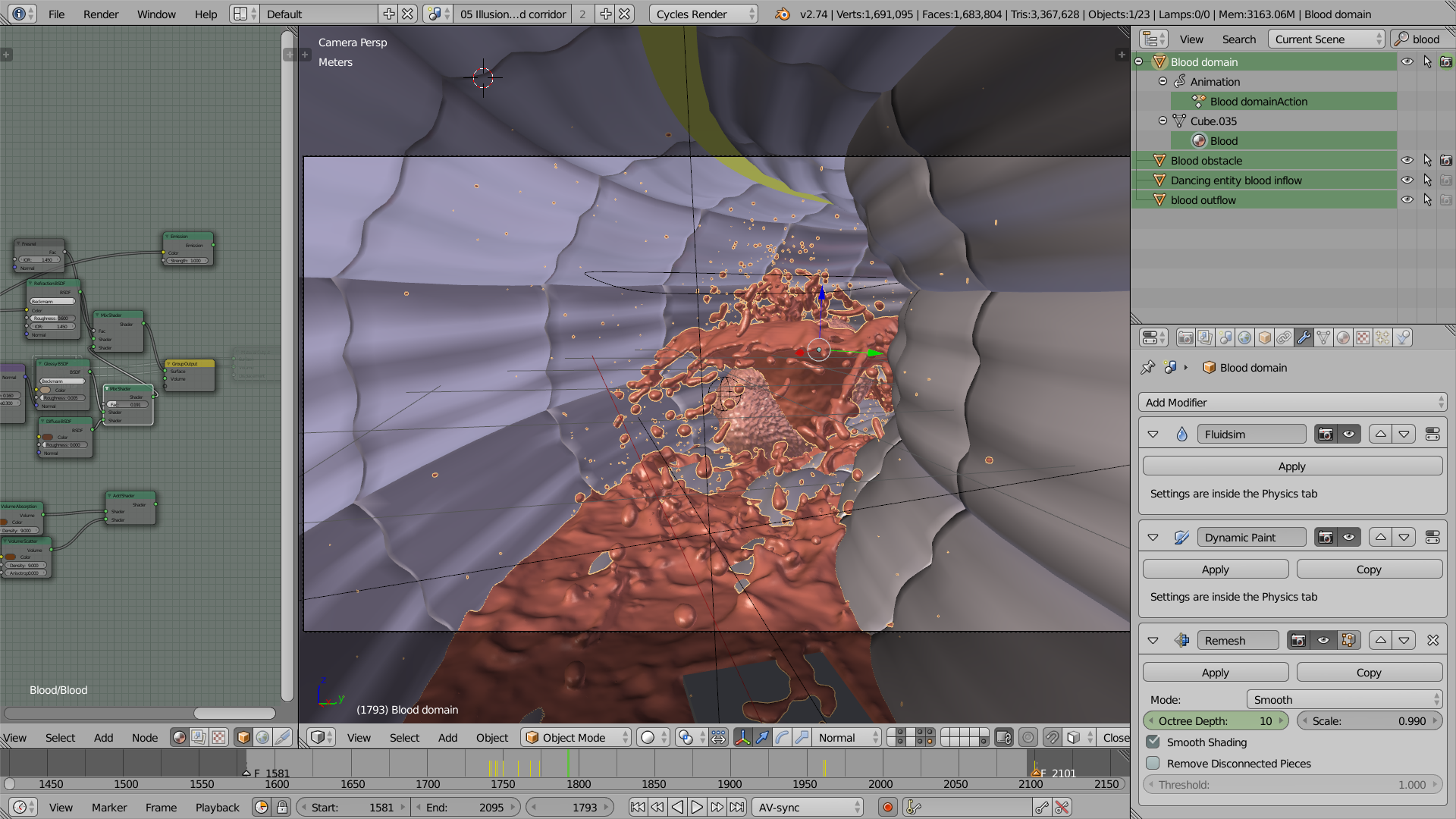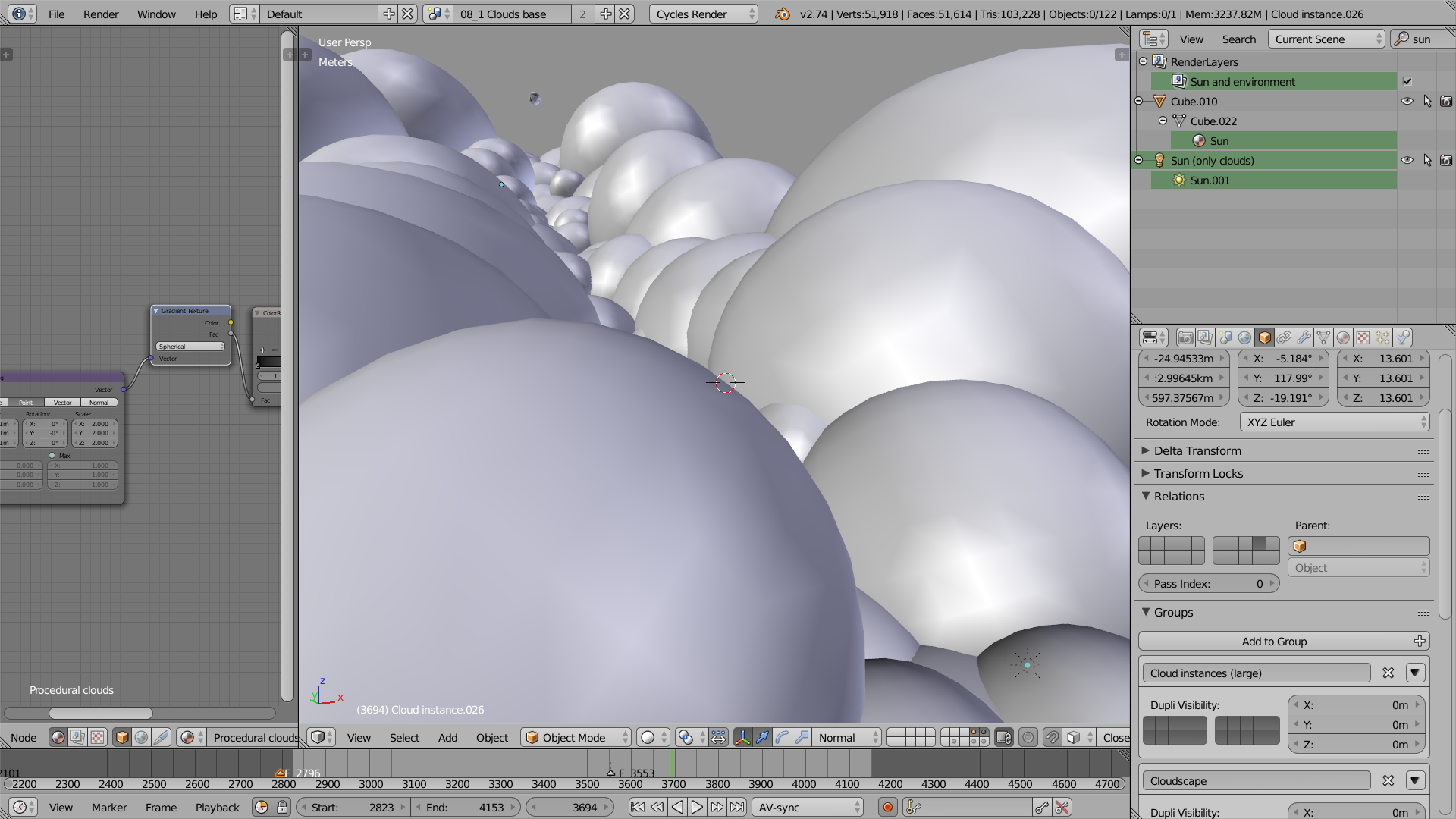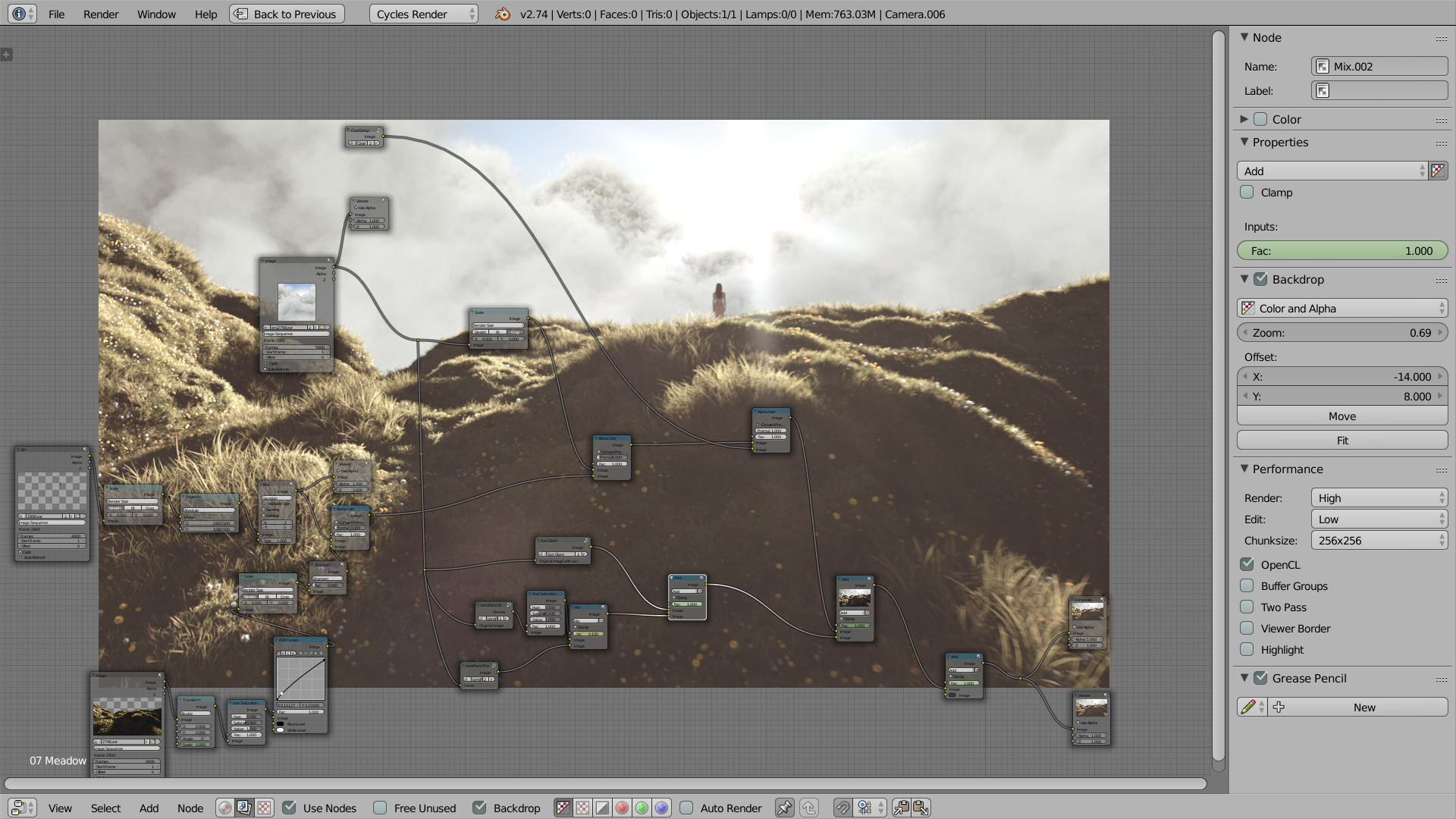Euphoria Module: Open Source 3D Short Animation
Euphoria Module is a short animated film made using Open Source tools (with the exception of some third-party resources: music, several sounds, several textures).
- Blender : modeling, animation, rendering, compositing, video and audio editing;
- MakeHuman : generating a model of a girl who was later “brought up” in Blender;
- Audacity : creating and processing multiple sound effects;
- GIMP : everything related to 2D (quite a bit in my case).

Everything is rendered using the Cycles engine integrated into the Blender. Most of the frames were counted on a single computer. Initially, I had one video card based on the GeForce GTX 770, and later I bought a used GTX 670 in addition. The difference in productivity between them is only 10-12%. For rendering, you can combine different video cards, it is very convenient and economical (not without nuances, of course). In addition to video cards, I tried to use any processors I could use, but they were very slow in performance. For example, even a very good i5-4670 (Haswell, 4 cores, 3.6 GHz in turbo mode at maximum load) loses one GTX 770 4-5 times. The figures are approximate, it all depends on the nature of the scene.

When graphics cards are busy computing, the interface of the entire system starts to slow down a lot. In this case, the video adapter built into the processor is useful, in the i5-4670 it is the HD 4600. It coped with tasks at a very tolerable level. The blender is good. Minor functions (compositing, video editing) could be better, but even in their current form they provide acceptable basic capabilities. Simulation of physical effects also needs to be improved. But modeling, animating and creating materials for Cycles was a great pleasure. It is worth noting that I evaluate everything from the point of view of the creator of a low-budget short film, for other tasks everything may differ.


Also, Blender is developing very fast. Every few months a new version comes out with significant improvements. Most bugs are quickly fixed. A couple of times there was a situation when I created a bug report, it was fixed within a few weeks, and I could download the latest build with the fix before the next final version was released. According to my calculations, the total rendering time was about 1 year for the GTX770 plus 6 months for the GTX 670. For the scene with clouds, I had to rent additional resources, which saved a couple of months.

An important point: everything was rendered in the resolution of 1920x1080. The 4K version uploaded to YouTube is an upscale, artificially increased resolution video. YouTube compresses everything so mercilessly that even in 1080p small details disappear. 4K resolution there is roughly similar in quality to well-encoded 1080p. Soon there will be a short video parsing the picture into parts. Added May 6, 2015 And here is the parsing of the picture:

Addition: answers to questions
- I would like to ask the author to describe the difficulties that have arisen, ways to solve them.There were not so many technical difficulties:
- It was difficult to achieve an acceptable fluid simulation. It was decided by repeated twisting of various parameters. After each change, I had to wait a long time for “baking” the simulation. There is no universal solution, it all depends on the particular scene. I look forward to improvements in this area.
- It did not work out correctly to make a full animation of the grass without glitches. Perhaps some combination of factors played a role, since in theory the grass from Grass Essentials should normally animate. Until I found out the exact reason. It was decided by a barely noticeable animation.
- Tell us what you, already having experience, would do differently in the project.
Having experience, I would have thought well whether it is worth using Cycles of the 2013 model (and I started then) for enclosed spaces with small light sources. This is a problem area for the path tracing method. The situation is gradually improving.
Perhaps I would still focus on Cycles, but then I would start selecting the rendering parameters by twisting all the bounces to 0, and then gradually increasing it, evaluating the picture. My problem was that I investigated the effect of the number of reflections on the render time using primitive scenes, because of this I calmly put 4-5 bounces of all types on complex scenes. It killed a lot of time.
